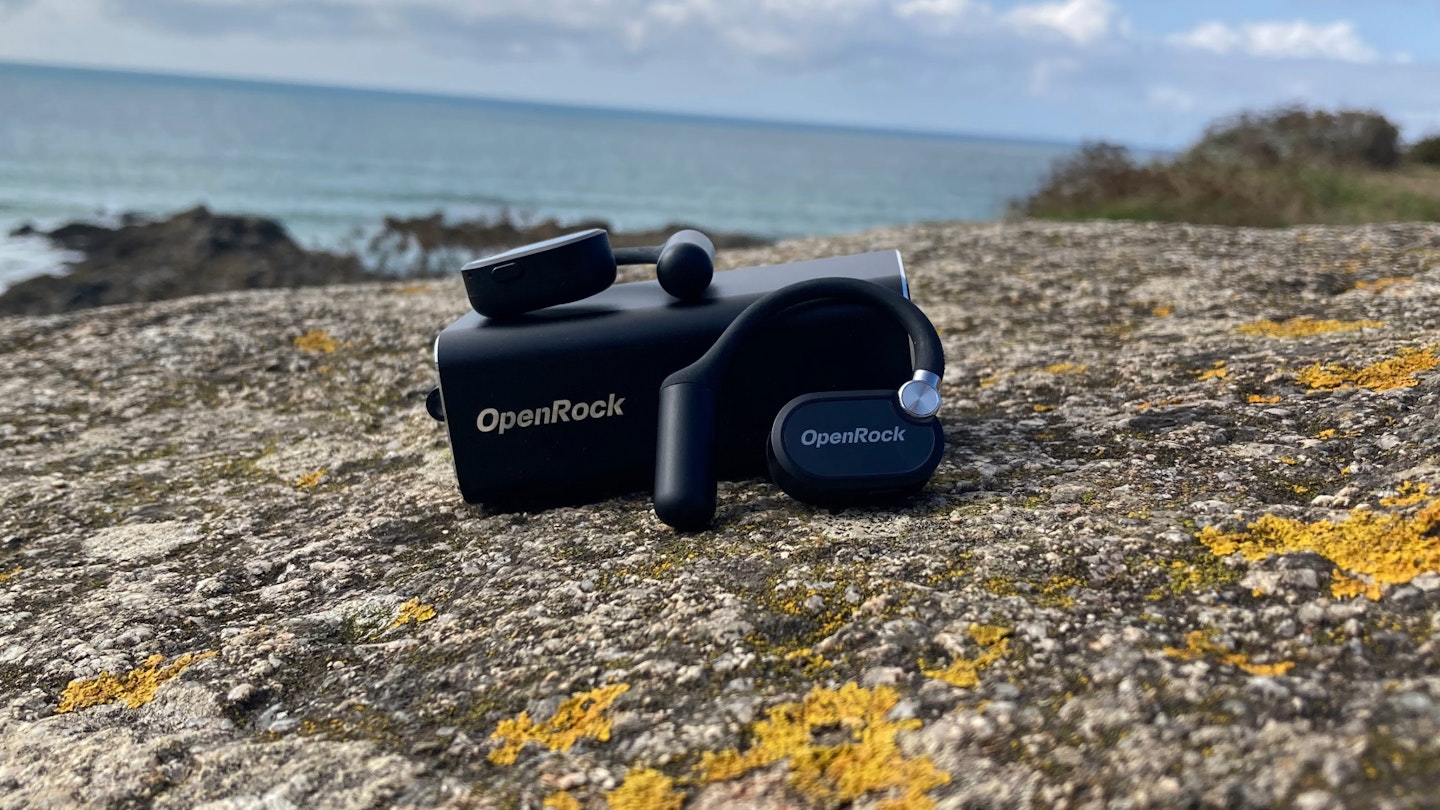Gym wear no longer refers to just clothing – an exercise outfit is incomplete for most people without a set of earphones. Whether for multitasking, getting into the zone or pure distraction, they have become an integral part of many a workout. To align earbuds more closely to this purpose, some companies now offer bone and air conduction headphones. This technology allows a degree of ambient noise, ensuring greater situational awareness and, potentially, a healthier, more pleasant user experience.
Launched in July 2024, the OpenRock X earbuds employ air conduction to deliver your audio of choice. Essentially this means that the buds are positioned over rather than in the ear canal. This distinguishes them from bone conduction headphones which, as the name alludes to, sit on the temporal bones (as well as the more familiar in-ear and over-ear varieties).
OneOdio has previously produced the OpenRock S earbuds and the OpenRock Pro earbuds but has deemed its most-recent pair to be the flagship in its inventory. At just shy of £170, they almost match the price of the similarly named OpenRun Pro 2 from competitor Shokz and claim to be able to offer theatre-like sound within a comfortable design.
Is that a load of hot air or are these headphones really as rock steady as OneOdio would have you believe? What's The Best's David Ker has put them to the test.
 OneOdio
OneOdioEarbuds from OneOdio, launched in July 2024.
Pros
- Excellent example of air conduction technology
- Brilliant battery life
- High-end charging case
Cons
- Some of the material is not hard-wearing
| Drivers | 14.2mm dynamic drivers |
| Output power | 119dB±3dB@1kHz |
| Frequency range | 20Hz ~ 20kHz |
| Connectivity | Bluetooth 5.3 |
| Battery life | 12 hours (only earbuds), 48 hours (with charging case) |
| Charging time | Within 1.5 hours (earbuds), within 2.5 hours (charging case) |
| Waterproofing | IPX5 |
| Dimensions | 91.5 x 46.1 x 32.5 mm (charging case) |
| Weight | 12g (earbuds), 90.5g (charging case) |
The new go-to?
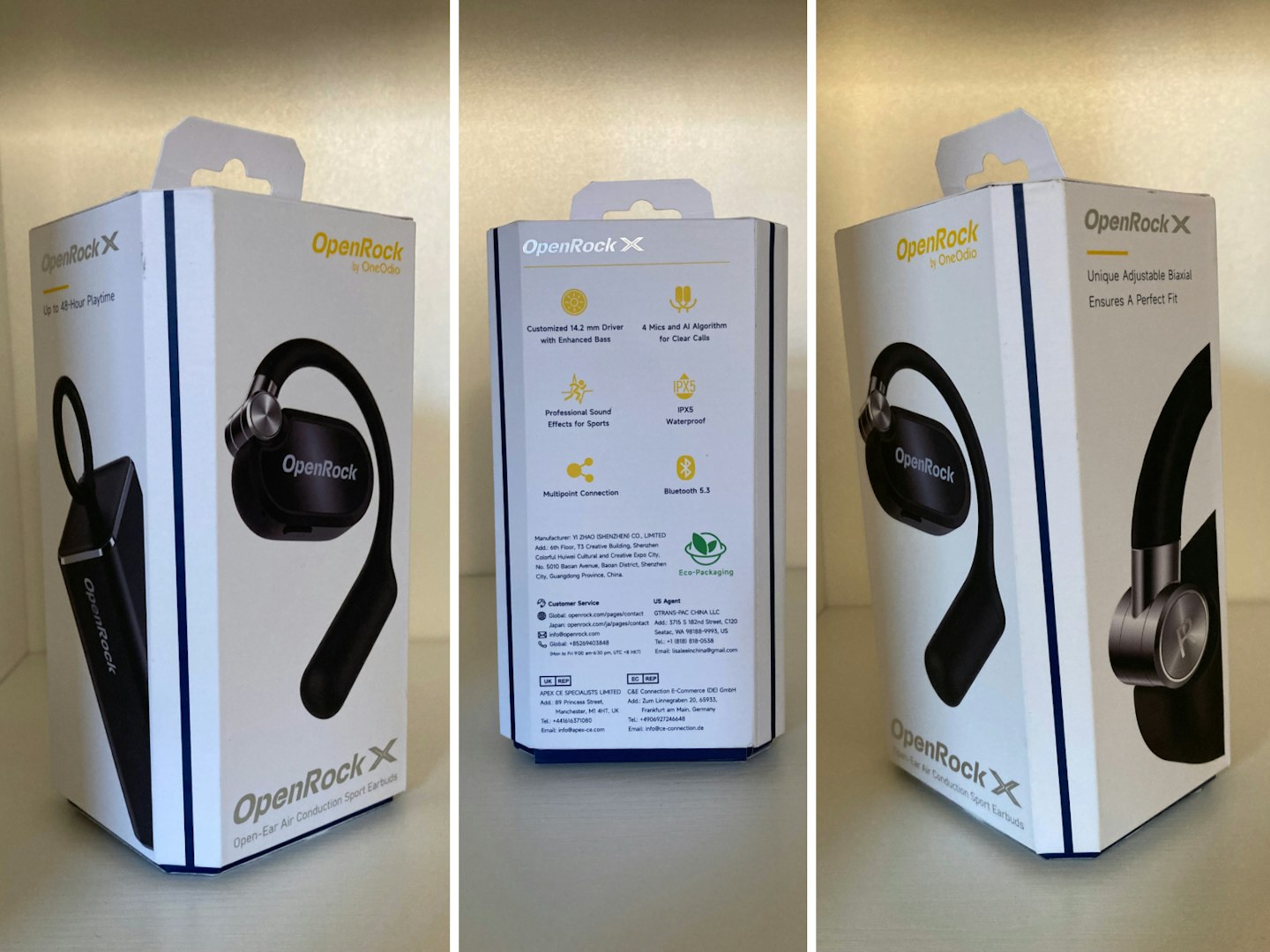
Keys, phone, wallet, headphones. That should give you some indication of the importance of a pair of earbuds to my day-to-day life. Leaving home without them isn't out of the question but, well, it just doesn't feel quite right.
Enter the OpenRock X Open-Ear Air Conduction Sport Earbuds which have taken the place of my usual in-ear headphones for the last few weeks. With a pitch that promises a new standard in headphone technology, I was keen to find out whether they might permanently claim the top spot.
The stated focus of OneOdio (OpenRock X's creator) for this device is sporting activities. However, for anyone who finds athletics anathema and exercise egregious there's apparently still exceptional sound quality to look forward to, whenever and wherever. That's just as well. A single-scenario use case for a piece of modern technology like this is difficult to argue for. Thankfully, the OpenRock X earbuds have proven themselves to be adept in several settings.
Take the air
Being far more used to in-ear, noise-cancelling headphones (the Elite range from Jabra, mainly), I was pleasantly surprised by this air conduction variety. Listening in low noise contexts the audio was clear and more than sufficient. Indeed, I ended up welcoming the ability to hear some surrounding sounds. It's an aspect which instinctively might be viewed as a negative in the context of headphones but actually facilitated an unanticipated degree of usability.
Yes, it's a safety consideration (when running, for instance, so that you are aware of traffic, pedestrians etc) but it also allows you to take in the environment in which you're living and listening. This was particularly welcome when going for a walk or when not wishing to completely cut myself off from what was happening around me. Note: this isn't simply a case of a lower volume which allows other sounds to seep through, or an exceptionally high volume to counter the gap between ear bud and ear. Rather, the technology here creates crisp, focussed sound which OneOdio put down to a BassDirect acoustic cavity, a 14.2mm custom dynamic speaker, a LISO 2.0 algorithm and Hi-Fi 5 DSP (digital signal processing). What this means in practice is less distortion and a richer sound, more on which later.
Design decisions
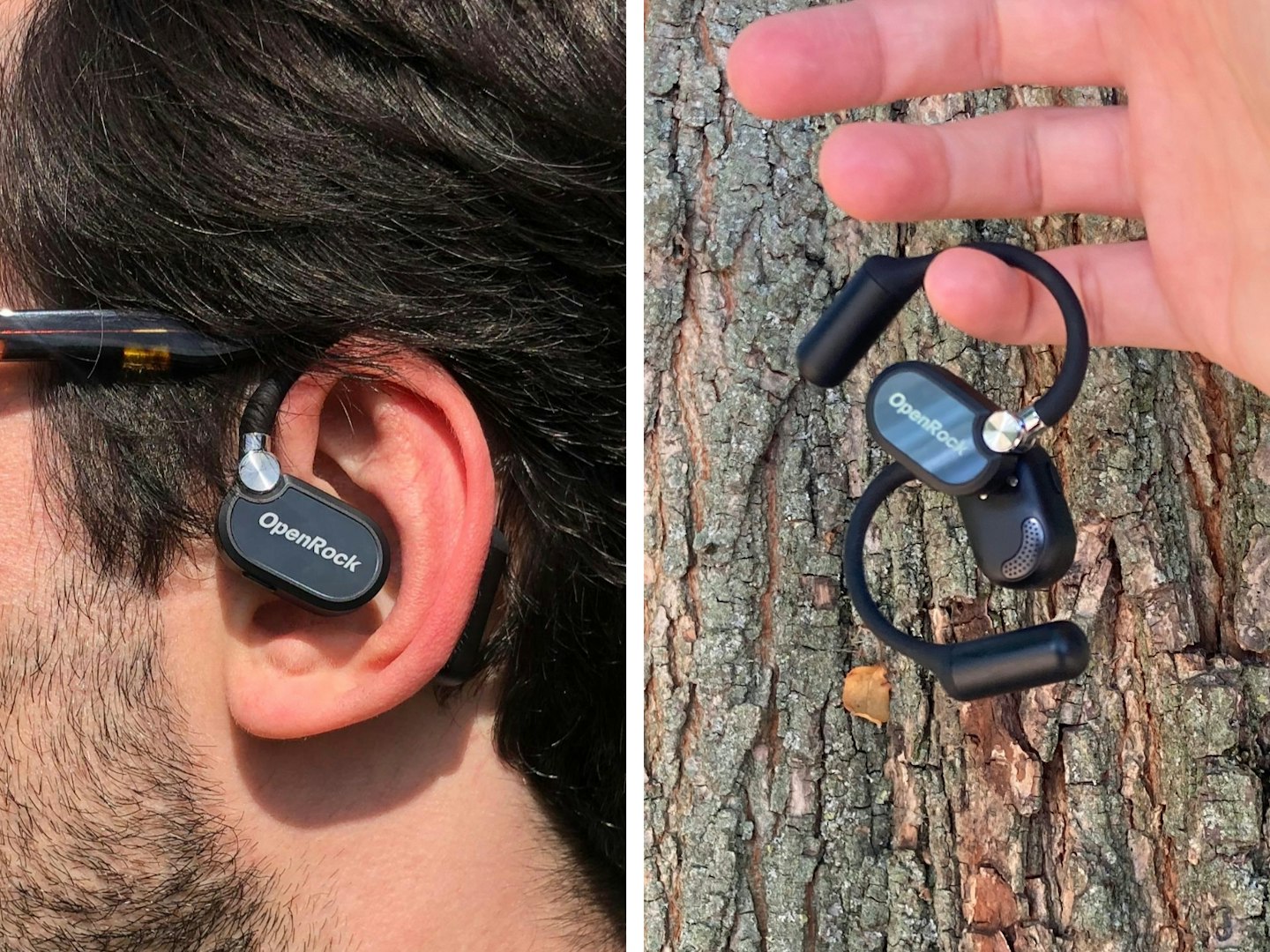
Before I started listening, first impressions were high thanks to the considered presentation of the earbuds. Granted, it's not what ultimately matters, but if spending a not insubstantial amount on a pair of headphones a soupçon of premium quality from the off doesn't hurt. Likewise, the inclusion of a carabiner in the box was welcome (a carry case can be purchased separately), and the high-end feel carried through to the charging case which is pleasingly tactile. Press the bottom of it and a soft release reveals the contents – the earbuds themselves.
These have a magnetic element which means that they can snap satisfyingly to each other, as well as back into the charging case. The rest of the design may be more divisive. Mostly matte black with some metallic silver and the OpenRock logo (rather uninspiring, in my view), they feature a hook to position over the back of the ear. The angle of the earbuds can then be adjusted to line up with the ear canal. Not as conspicuous as huge over the ear cans, nor as discreet as in-ear options, it'll be a question of preference whether this is the look for you. I accepted the design as a trade-off for the air conduction functionality and wasn't overly conscious of the headphones when being worn thanks to their weight (only 12g) and the material used for the ear hooks (silicone).
Controlling the sound
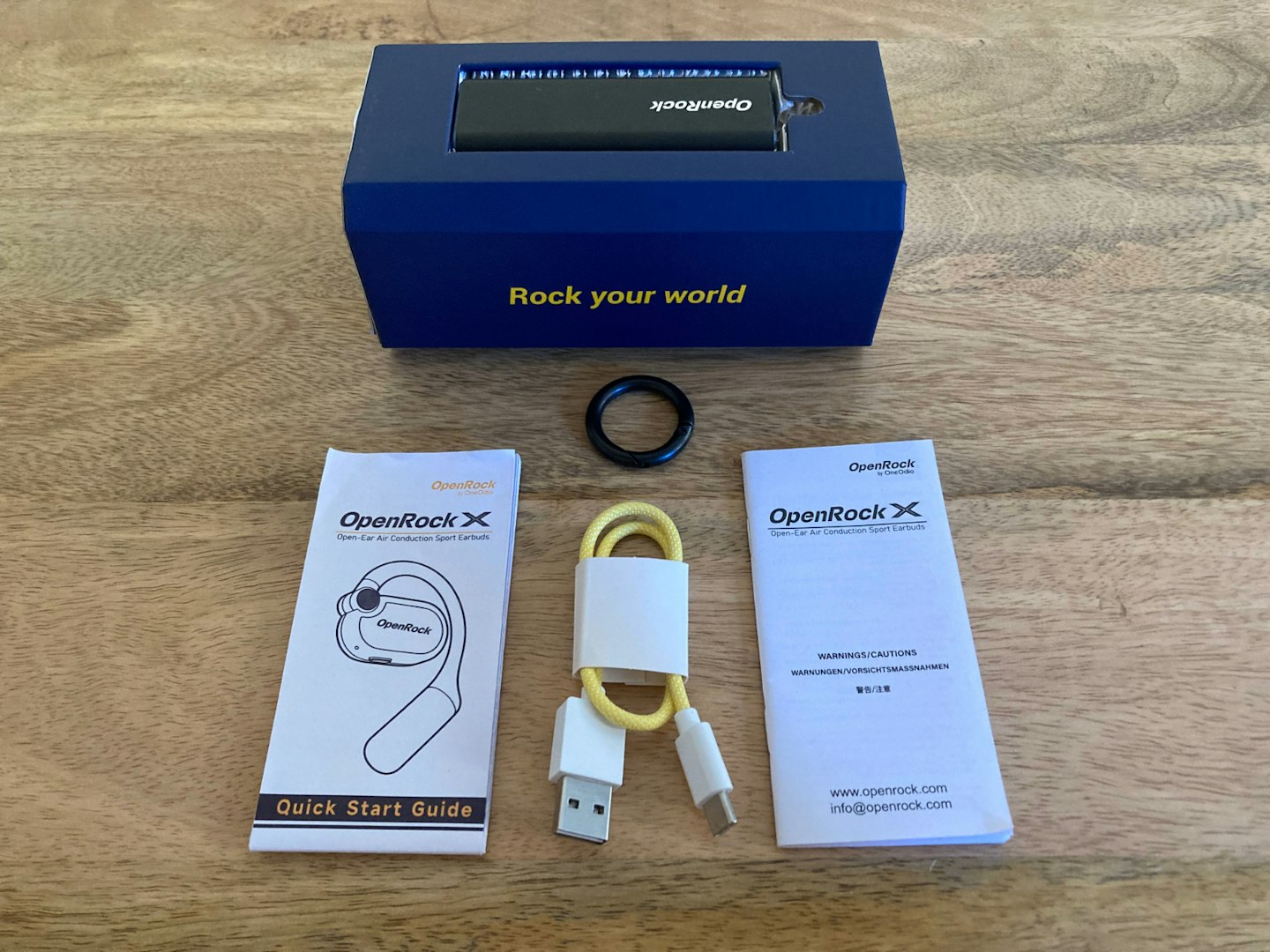
They are charged via the case and the battery life is superb. 48 hours of playtime is promised, and using intermittently over the course of a month I found that there was still power to spare. I was able to monitor this using the OpenRock app which aided set-up and then provided ample control once getting into using the earbuds proper.
Elements aimed at improving user experience include customisable gestures (what a long press on the earbuds does in relation to volume, microphone etc) a max volume limiter, over-time wear reminder and a 'find my buds' function. This triggers the buds to emit a high-pitched beeping if you've misplaced one or both and could do with a point in the right direction.
When it comes to controlling audio, an equaliser provides 'Rock', 'Relax' or 'Boom' modes, as well as allowing you to adapt as desired. Other app elements with sound in mind include 'sound balance' through which you can control how output is shared between the left and right earbud (50/50 is the default) and 'spatial sound'. This, the app advises, can be engaged to offer a more 'spatial auditory experience'. There is a difference when used, but not one so noticeable that it should influence your purchasing decision one way or the other.
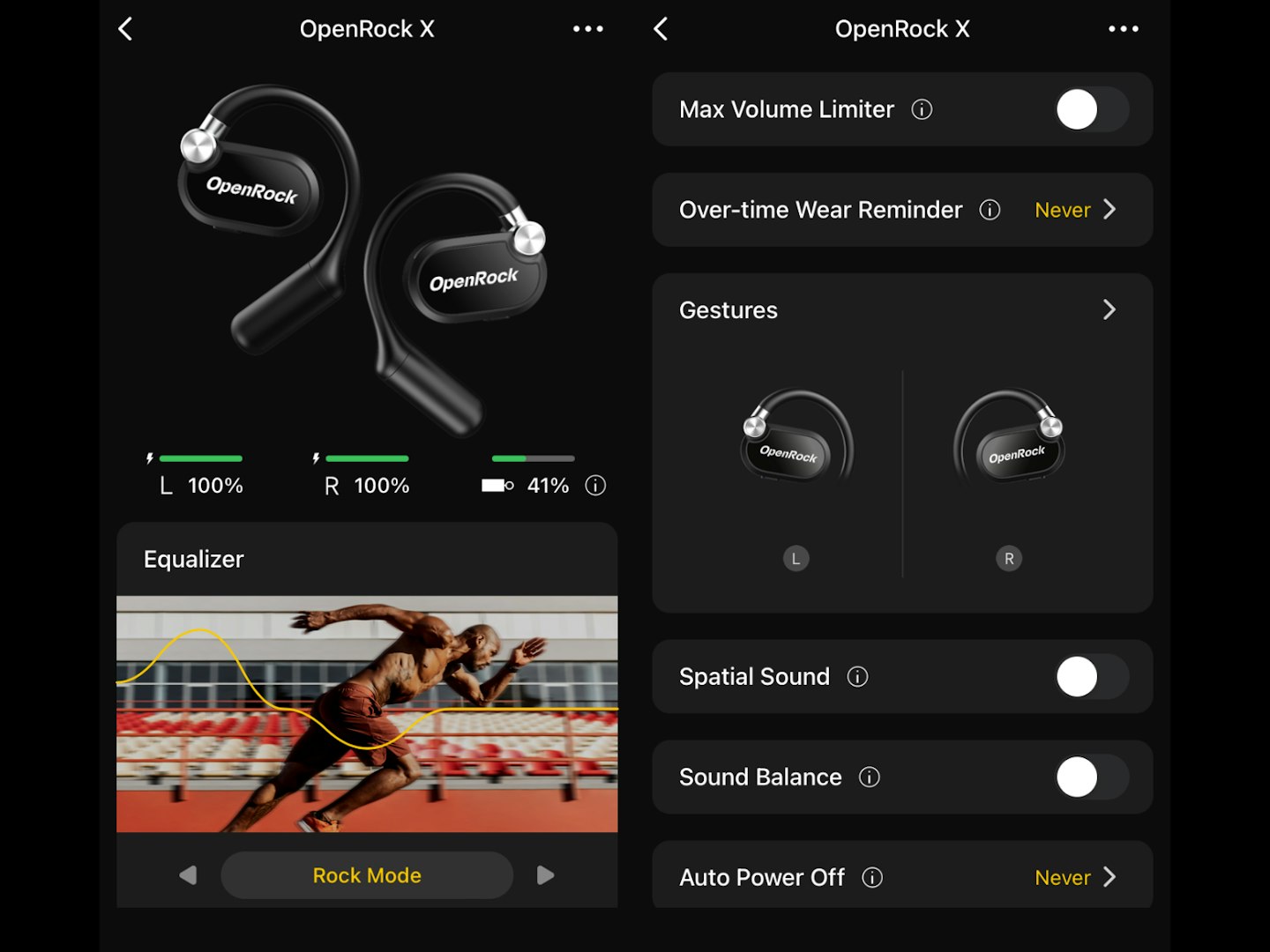
The sound overall though is impressive. The degree of clarity belies the fact that the buds sit on, rather than in, the ears. While some noise inevitably escapes, I would've expected this to be far more evident. Not only did I struggle to notice this, but when using the headphones near others they also said that they couldn’t hear any music coming from them. This was important to be confident of, not so much through worries about my musical choices becoming public knowledge (who doesn't love The Beautiful South?) but because it confirmed that the gap between ear canal and ear bud wasn't simply being overcome via exaggerated volume.
Whether listening to Paul Heaton's soothing satire or various podcasts, vocals were clear and rounded and the bass robust. This extended to telephone calls which were easily carried out using the four headphone mics. The ability to connect to two devices simultaneously also made the process of starting and ending calls straightforward if linked to my laptop and phone at the same time.
Any downsides?
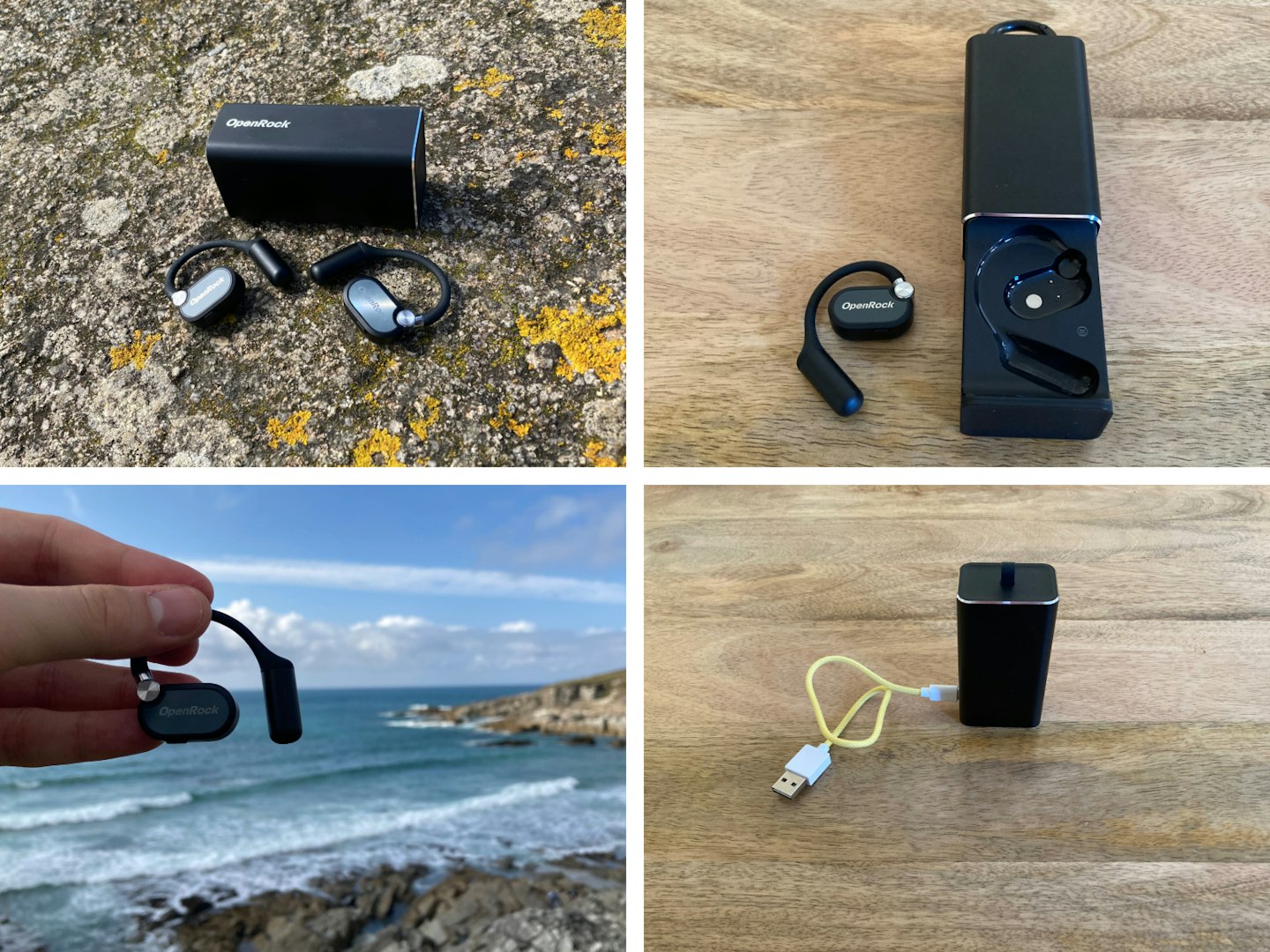
With that being said, when it comes to very noisy environments, I would still reach for an in-ear or over-ear headphone before the air conduction variety. In countless settings your audio is competing with other sounds, sometimes several at once. Gyms, public transport, cafes – they're all environments in which headphones are potentially having to be heard over people, machinery and piped in music from other sources. It was excellent to be able to experience ambient sound at certain times, but over the course of my testing I unsurprisingly encountered scenarios where this was less desirable. Admittedly, this is something which can be levelled at air and bone conduction headphones in general.
The OpenRock X therefore have a difficult tightrope to walk when boasting both of their ability to ensure situational awareness, while at the same time blocking out background noises. They try to bridge this gap with the Boom sound mode, which does help but which I can't avoid thinking is just a case of flicking a switch which allows the volume to go higher than is necessarily advisable (at least for extended periods). Additionally, noise-cancelling headphones benefit from being able to function as a pair of traditional earplugs when not being actively used, something which I find handy on a busy train, for instance, and which the OpenRock X earbuds are, of course, unable to do.
There's another reason I found myself reverting to the use of more familiar headphones – comfort. While by no means painful, I did feel the effect of the over the ear hook after extended use, perhaps inevitable given the fairly one-size-fits-all design.
Finally, having earlier commended the overall look of the charging case I did discover that it was easily scuffed, and that the same goes for the earbuds.
Price and competition
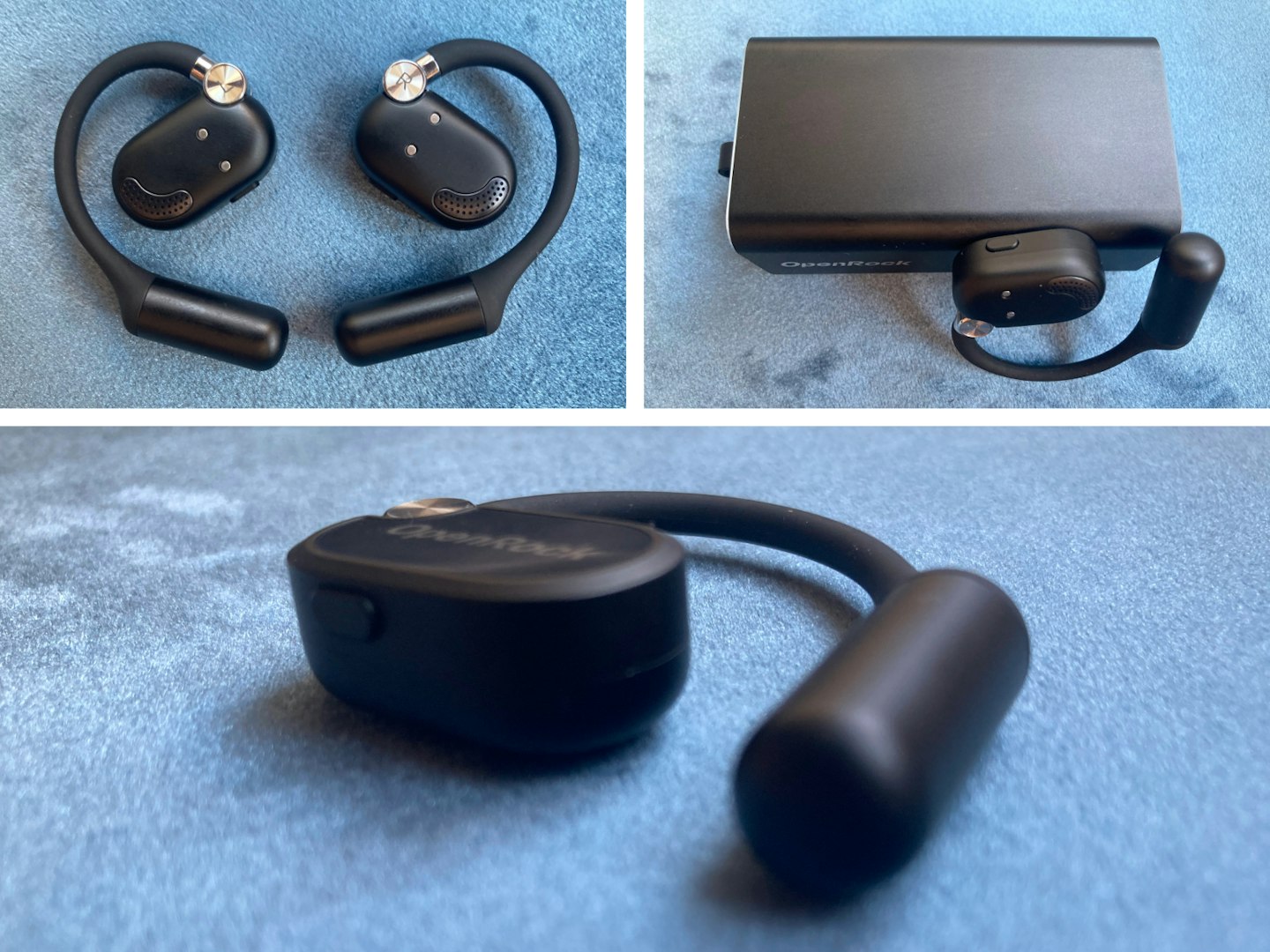
As highlighted, at £170 the OpenRock X retail for about the same price as the highly-regarded Shokz OpenRun Pro 2 which combine air and bone conduction technology. While they perhaps offer more in terms of functionality, they do differ in look thanks to a strap that connects the left and right earbud. If this is something you're looking to avoid then the Shokz OpenFit Air are of a much more similar design to the OpenRock X.
Beyond Shokz and OpenRock (and their frustratingly similarly named products) air and bone conduction technology is one area of the consumer audio market where there's not yet an abundance of choice. Unlike the numerous excellent Bluetooth speakers and budget soundbars available, headphones of this sort are harder to find.
While I have no hesitation in recommending OpenRock and Shokz (both strong performers generally in our tests), for other options around the same price consider the Active Open Ear TAA7607 headphones from Philips or the Suunto Wing headphones. Alternatively, if your budget goes further, you can pick up a pair of Ultra Open Earbuds from the ever-popular Bose for around £250.
Who are the OpenRock X Earbuds for?
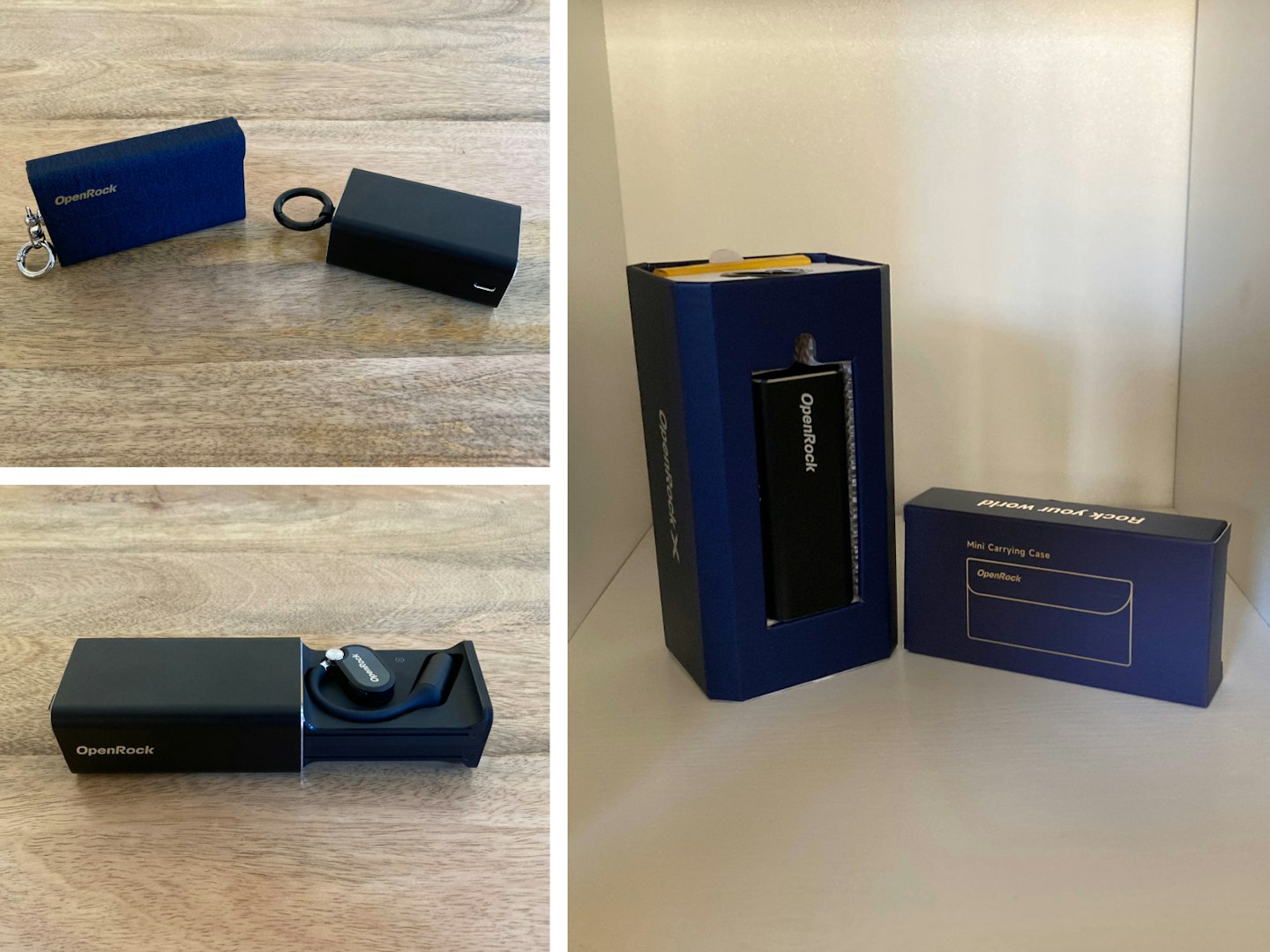
I hope it's clear by this point that if you're looking to be completely cut off from the world around you when listening to music then these are not the headphones for you. By contrast, if you find earbuds of that sort slightly claustrophobic then the OpenRock X could be ideal.
Aimed at health and fitness enthusiasts, I became convinced that they are an almost essential form of tech for road runners desiring an audio accompaniment to their sprints without compromising safety. Likewise, cyclists. The same can be said for most other forms of exercise, though I'd avoid if you attend a particularly noisy gym.
They might also struggle to stay perfectly in place if moving intensely, but with moderate exercise I didn't find that this was a problem. Plus, with an IPX5 rating (a measure of dust and water resistance), working up a sweat isn't a concern, just don't go out in a downpour or head to the pool (swimmers should instead check out the Shokz OpenSwim Pro).
Would we recommend them?
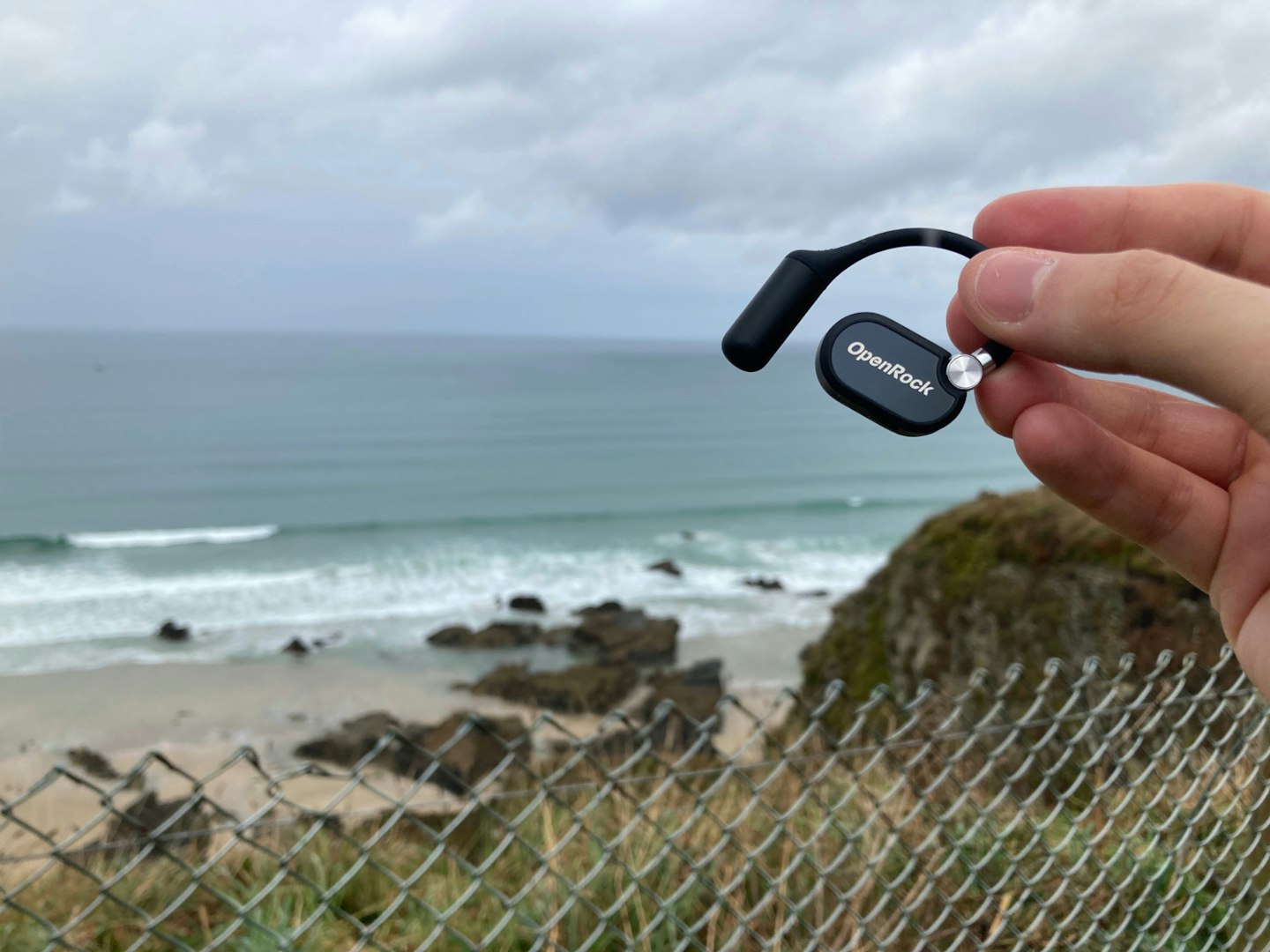
The OpenRock X provide a really commendable sound, which should be the first consideration in any discussion of headphones. However, If you're likely to have a pair of earbuds in at all times, you might struggle. The very nature of air conduction means that there will be a degree of lost noise.
Despite this, they still perform admirably, and if you intend on using them in more specific circumstances where the ambient noise levels are not overwhelming they'll be a great addition to your routine. The option to hear some surrounding sounds when out for a stroll or bike ride was particularly welcome. Premium touches, an exceptional battery life and an easy to use app are further marks in their favour.
If you want to enjoy your favourite music without missing out on what's going on around you, these headphones are an excellent option.
More items to consider
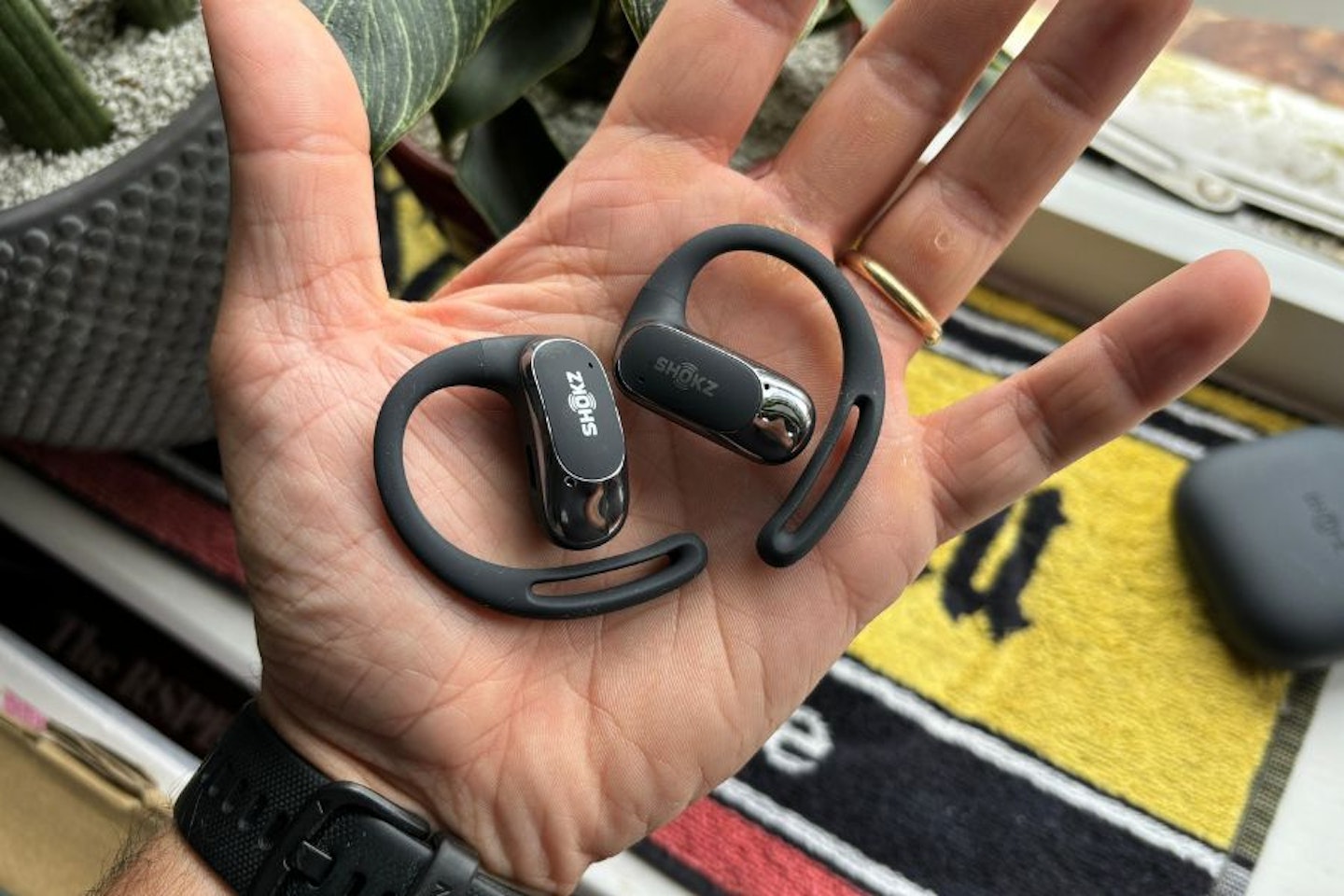 WTB / William Austin-Lobley
WTB / William Austin-LobleyAnother set of open-ear headphones with an over the ear hook design, they were deemed "near-perfect" by William Austin-Lobley in his review.
Pros
- Great sound that fights against the cliche of weak open-ear audio
- Comfortable and light, with a great grip that holds on during intense exercise
- Well-implemented touch controls
Cons
- Build quality is a bar below typical Shokz fare
- Six hours of battery in earphones
| Drivers | 18 x 11 mm composite dynamic driver unit |
| Battery life | Up to 28hrs with charging case |
| Charging time | Quick charge 10-minutes for 2hrs playback.<br>Charge the earbuds with the charging case: 60 minutes;<br>Empty case with charging cable: 120 minutes |
| Waterproofing | IP54 |
| Weight | 8.7g each<br>Charging case 56.5g<br>Total: 74g |
| Bluetooth | 5.2 |
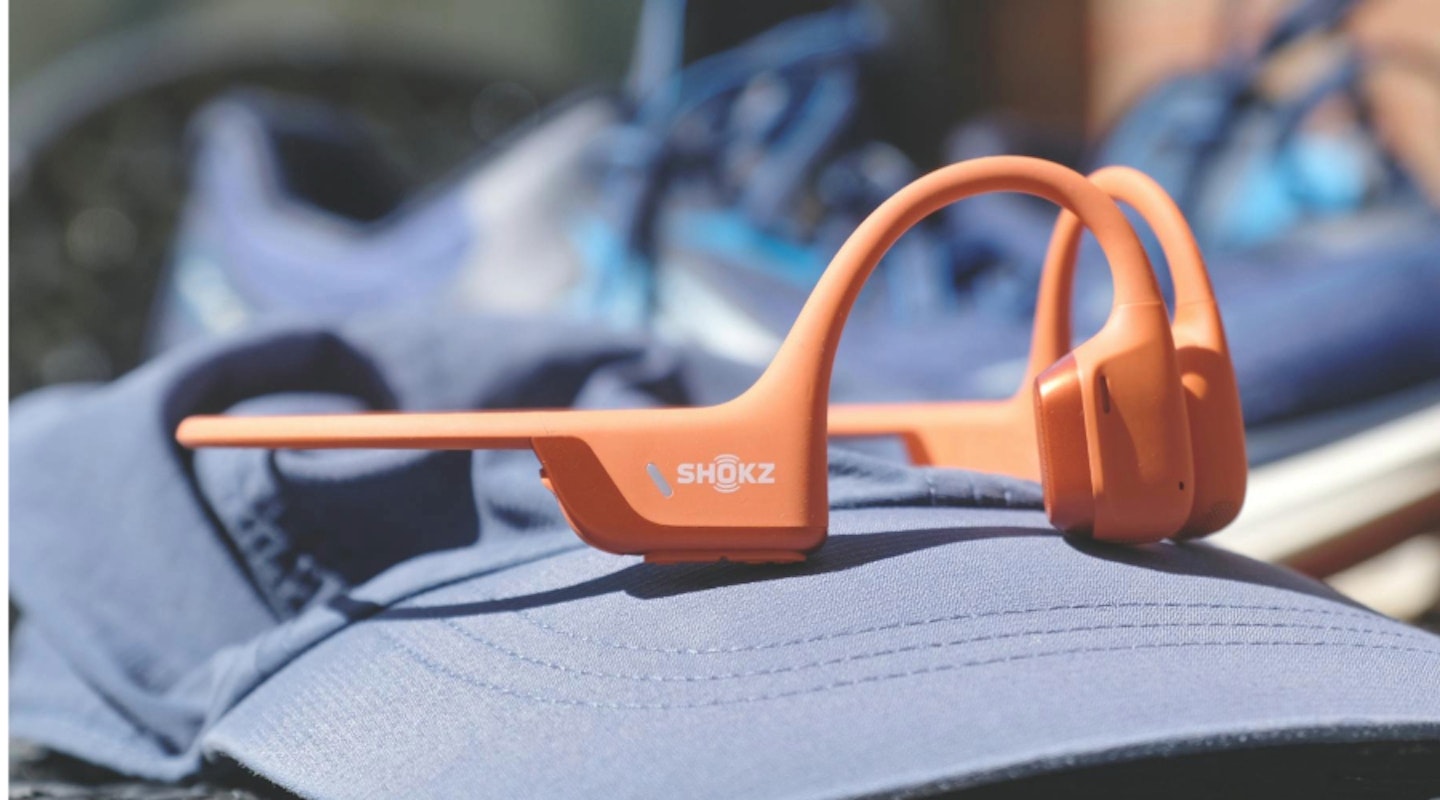 What's The Best/William Austin-Lobley
What's The Best/William Austin-Lobley A five-star review isn't given out by the What's The Best team without good reason. Find out what's so special about these air and bone conduction headphones here.
Pros
- The all-new DualPitch tech delivers excellent audio, in tone, volume and clarity
- 12 hours of battery life and USB-C charging
- Flawless Shokz build and comfort, whether sitting, walking, running or cycling
Cons
- Air conduction means increased sound leak, a problem in quiet areas
| Battery life | 12-hours playback, 10 weeks standby |
| Charge time | 1hr to full or 5 minutes for 2.5hr playback |
| IP rating | IP55 |
| Weight | 30g |
 Adam Binnie/WTB
Adam Binnie/WTBWe reviewed the Jabra Elite 7 Active Earbuds in 2023. They've now been superseded by the Jabra Elite 8 Actives so can be picked up at a knockdown price.
They are both examples of great in-ear headphones and a good alternative to air conduction if you are not yet sold on the idea and enjoy listening to music 24/7.
Pros
- Great sound
- Secure fitting
- Long battery life
Cons
- Find my Jabra could be better
- Noise cancelling on calls is not great
| Speaker size | 6mm |
| Noise cancelling? | ANC and HearThrough |
| Battery life | 8 hours |
| Connectivity | Bluetooth 5.2 |
| Earbud weight | 5.5g each |
| IP rating | IP57 |
Who tested the OpenRock X Open-Ear Air Conduction Headphones?
What's The Best's Deputy Editor, David Ker, tested the OpenRock X earbuds. He used them on and off over a few weeks, testing in a variety of environments and circumstances. He listened to music and podcasts as well as taking calls.
His testing included using the earbuds while exercising outside and in a gym. He made use of the OpenRock app to try the available headphone features.
Why should you trust us?
At What's The Best, our mission is to provide accurate and reliable reviews, ensuring our readers receive honest and transparent information about the best technology products available. Anything less would undermine our commitment to being a trusted source of unbiased product information.
Our dedicated in-house writing team comprises experts with extensive experience and a genuine passion for technology. Collectively, we have spent decades testing and writing about tech, leveraging our expertise in all our articles, advice pieces and reviews.
We maintain complete editorial independence and do not accept payment for product reviews. Our writers have full control over their content, ensuring that products are selected based solely on the needs of our readers. While we may earn commissions or other compensation from links on our website, this never affects our product choices. These links enable us to continue offering valuable consumer advice, without compromising the integrity of our reviews.
How we test products at What's The Best
Struggling to navigate the audio world? We provide unbiased reviews for real listeners.
At What's The Best, we ditch the technical jargon and deliver sound reviews for sound people. Our team of audio enthusiasts puts everyday speakers, headphones, and more through their paces in real-world listening scenarios. We don't waste your time with staged tests – we focus on how these products actually perform for everyday music lovers.
The result? Unbiased buying advice you can trust. We only review the most relevant and impactful audio products on the market, so you know you're getting the latest insights. Can't find a review for your specific gear? We're constantly expanding our review database, so stay tuned!
Want to dive deeper into how we test audio products? Visit our dedicated page detailing how we go about performing our audio reviews.
David Ker is a journalist with a decade's experience in print and digital publishing. He appreciates technology made with its environmental impact in mind and which presents him a further means to pursue his love of music, reading, games, TV and film. Above all, with so many options out there, he's interested in products that display something out of the ordinary and offer value for money. Hard to please, he assures What's The Best readers that he'll be a discerning critic on their behalf.
Subscribe to the What's The Best Newsletter to keep up to date with more of the latest reviews and recommendations from the What's The Best team.
